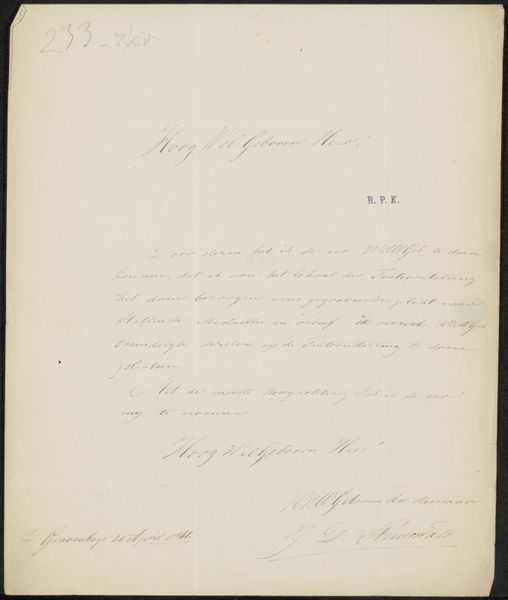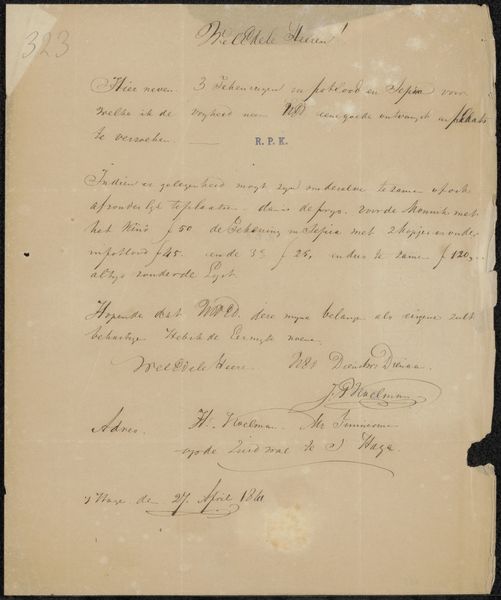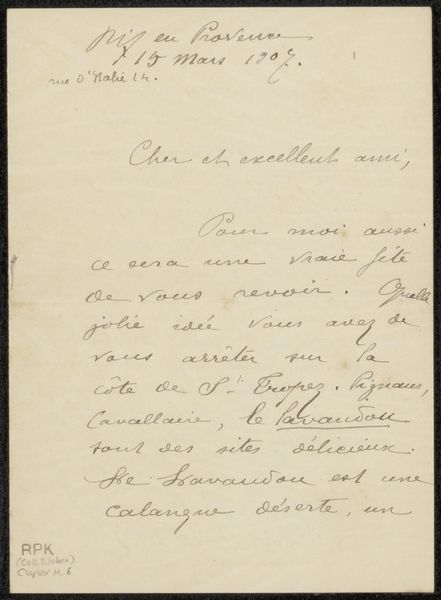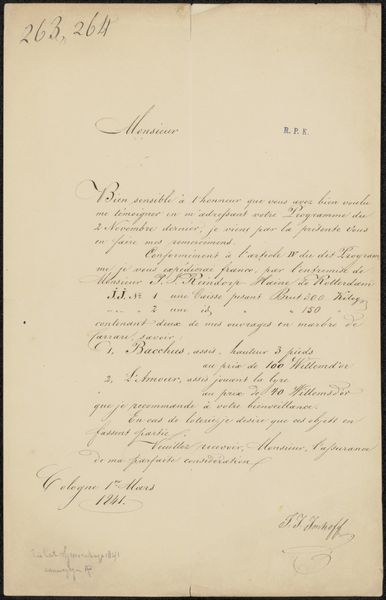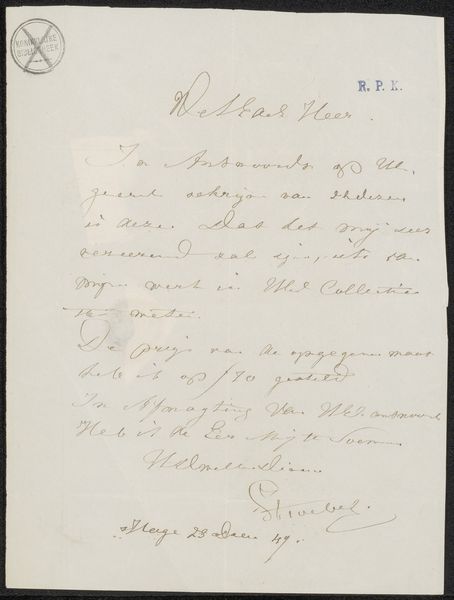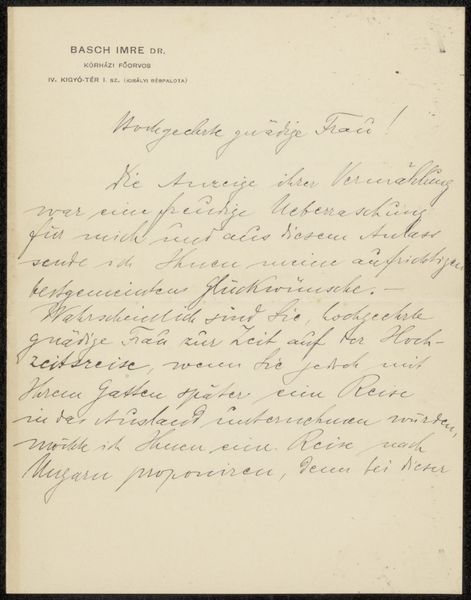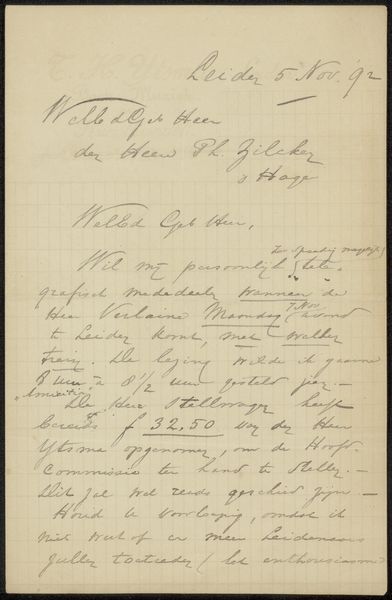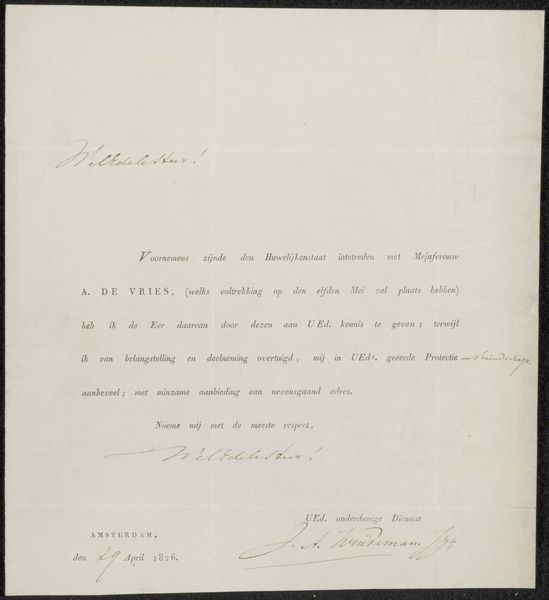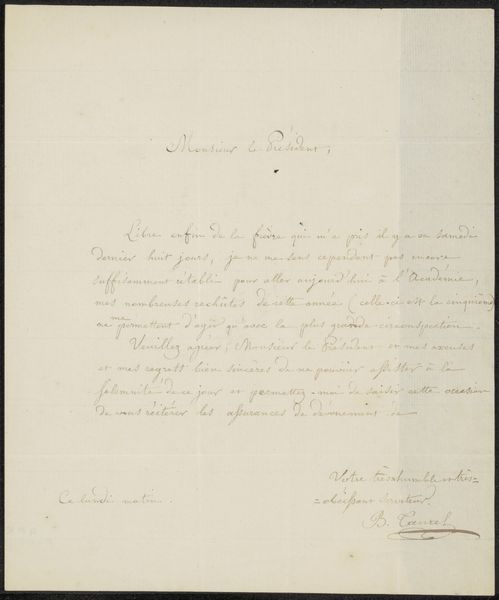
Brief aan Lodewijk Constantijn Rabo Copes van Cattenburch Possibly 1836
0:00
0:00
drawing, paper, ink
#
drawing
#
paper
#
ink
Copyright: Rijks Museum: Open Domain
Curator: This intriguing piece is a letter entitled "Brief aan Lodewijk Constantijn Rabo Copes van Cattenburch," possibly from 1836, by Andreas Schelfhout. It's crafted with ink on paper. The overall effect is one of elegant restraint. Editor: My immediate impression is one of faded formality. The sepia tones and the cursive script convey a sense of distance, a hushed tone as if we are observing a private exchange. It is contained. Curator: Indeed. Schelfhout, known for his landscapes, offers a fascinating glimpse here into the epistolary practices of the Dutch elite. We must consider the role of letter-writing within social structures—a curated performance of identity and power. What does the context tell us? Editor: Looking closely, the ink strokes are very consistent, displaying fine, controlled linework. The spatial relationships are structured but relaxed. Semiotically speaking, the flourishes serve to punctuate status and underscore an elaborate self-presentation—a specific message construction. Curator: I would also contend that the very act of committing to paper and sending a physical document becomes a symbol of commitment and establishes a record that we can engage with from a contemporary stance. The use of ink itself—the labor required—creates inherent value and historical importance, a deliberate action reinforcing hierarchy. Editor: I observe the delicate balance between the text as pure communication and the visual aesthetics of handwriting as artistic expression. This is more than simple transfer of information: this artwork uses letter-writing to signify the author’s place in his world. The physical qualities further act as an embodiment of their intended status. Curator: It presents as an artifact imbued with power dynamics and reinforces societal structure through written language, something both familiar and removed for the contemporary visitor. Editor: Viewing the work in detail has further clarified not only Schelfhout's technical capabilities but its position within social hierarchies. It creates an enduring and self-aware demonstration of status.
Comments
No comments
Be the first to comment and join the conversation on the ultimate creative platform.





